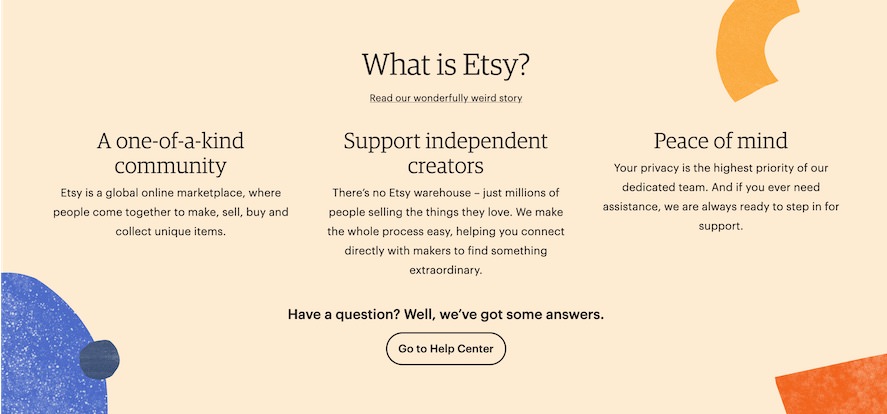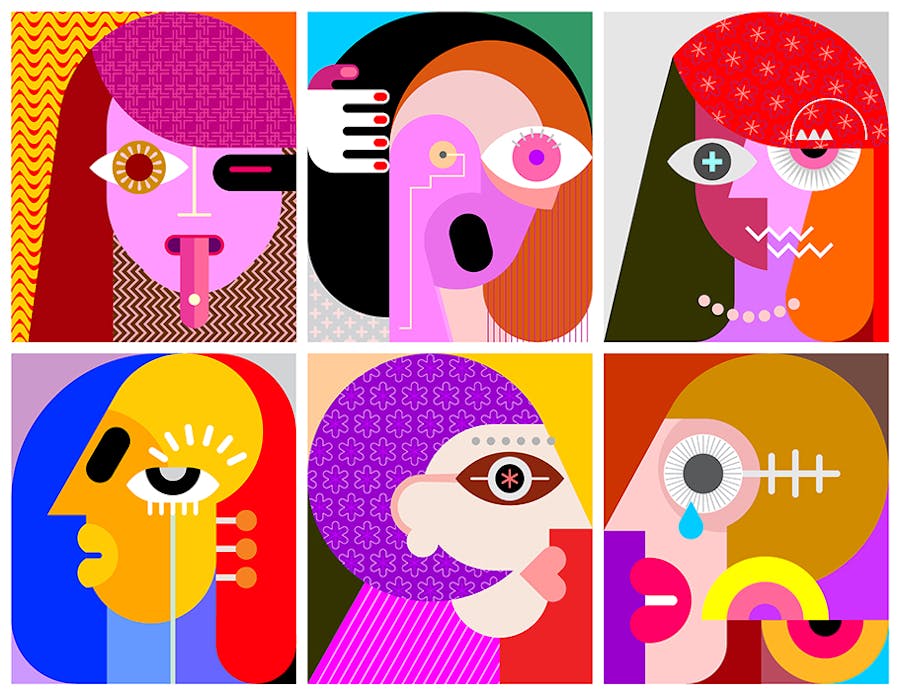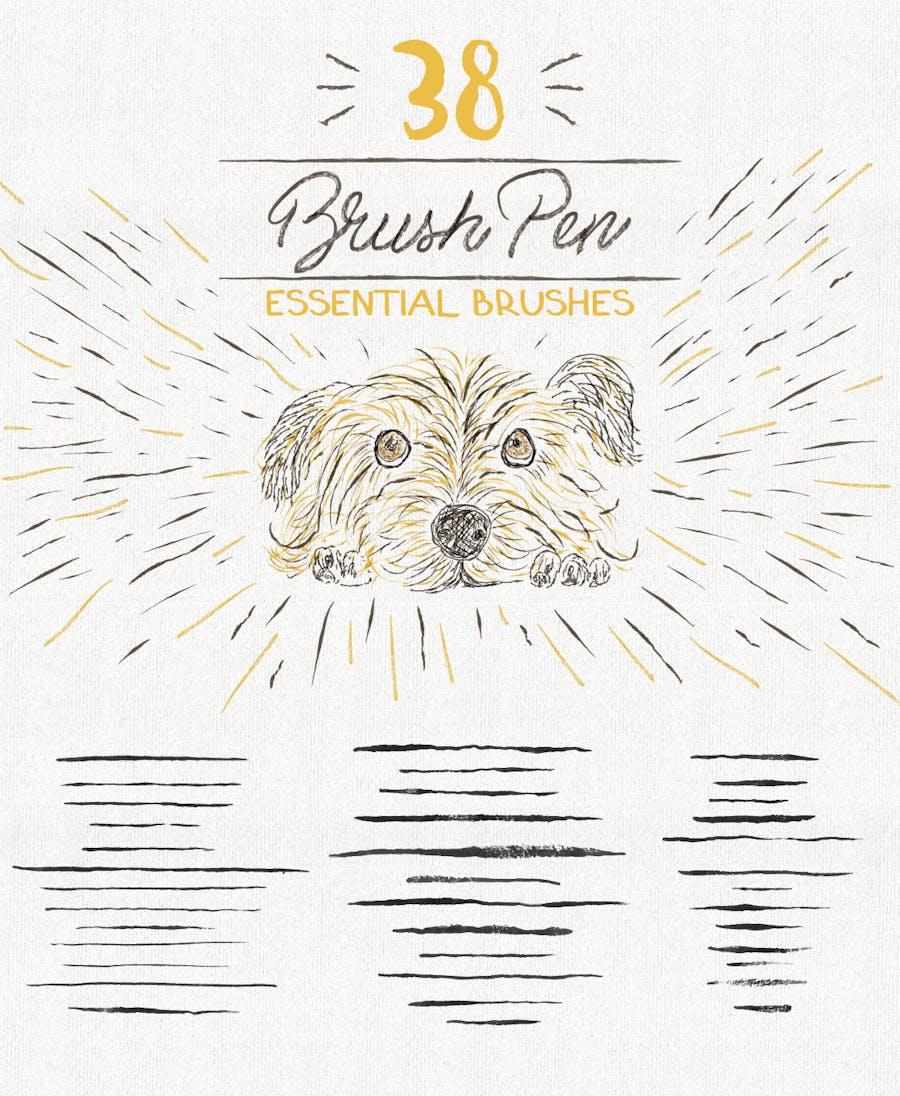How To Use Brand Illustrations In Your Marketing
In the hands of a seasoned marketer, custom brand illustrations are a powerful and versatile tool. When it comes to conveying complex messages in simpler ways, nothing can beat them. That’s why many brands use illustrations as a part of their branding. And why you might want to, too!

Creating a custom illustration style for your brand comes with several benefits:
- Your illustrations will create a unique visual language for the brand.
- Custom illustrations help you maintain consistency with your branding.
- They provide your brand with a way to tell your story in a memorable way.
- They help you engage your customers.
To make the most of all these benefits, there are several steps you should take when developing brand illustrations. You can’t just pick a style willy nilly and hope it will work well. Like all design types, illustration styles involve a lot of intricacies. And picking the best one for your brand is a bit of a science.
01 – Know your brand
Before picking out your style, make sure you and your designer know your brand in and out. Consider your brand story. What inspired you to create the brand? How has it evolved? How might you bring these ideas to your brand illustrations?
Join forces with your designer and rediscover your brand. Try thinking about your brand through the eyes of the customer. And if you don’t have enough insight to do this, reach out to them and get some data and feedback you can work with. Do this during your design process as well, as you test out different versions. That way you can figure out which style will tell your brand story best, and connect with your audience.
One brand that has incorporated illustrations, in many forms, into their branding is Redbull.
Redbull has maintained a unique cartoon-like illustration style throughout the years. And it has been quite popular. In all its animation videos and GIFs, it highlights the tagline “Redbull gives you wings”. And its brand illustrations carry the energetic and light-hearted nature of the brand to its audience perfectly.
02 – Do your research
To create brand illustrations that are relevant and effective, you need a clear idea of what others in your industry are doing. And what’s working and not. So do some thorough research about the illustration styles that are currently being used in your niche. And complement this by researching other styles that can help you achieve the same effect, in a unique way. Here are a few sites you can check out for some inspiration:
You can always ask your designer to do research to come up with suggestions for you, if you don’t have a particular vision in mind. But it definitely helps to provide at least 1 or 2 references. And they don’t even have to be styles you like. Showing examples of what you don’t like, and explaining why, can be helpful too. Your designer will then be able to incorporate these insights into creating unique brand illustrations that represent your brand well.
03 – Understand their purpose
Knowing what your brand wants to accomplish by using illustrations is important. When you use rand illustrations, it’s not just a matter of aesthetics and what looks good. You’ve got to figure out the form and function of the illustrations. Will they be icons, frames, or character illustrations? And where will these illustrations be used? Social media posts, websites, presentations, email newsletters, flyers or brochures, guide books, stickers, or on apparel? Maybe a combination of these placements? You’ve got to get very specific about identifying where your brand illustrations will appear, so that they can be designed with the end goal in mind.
One more thing you have to consider is if the illustrations are going to be used in both digital and printed formats. In the case of digital formats, consider both static and animated applications like GIFs and videos. This way you can request that your designer provides your illustrations in the file formats you’ll need them in. When it comes to understanding the purpose of the illustrations, and designing with intent, Headspace has done a great job.
Headspace is a guided meditation app that helps users to relieve stress through meditation. The brand illustrations they use make the ancient concept of meditation more accessible. And they also make meditation more relatable to a wider range of potential users.
Headspace uses stylized and simplified drawings of people with a cool, calm color pallet that is easy on the eyes. This makes it easier to consume all the details and ideas being shared. to take in all of the details. And they do all this with color combinations that always complement and reinforce their brand color of orange.
04 – Experiment with your brand’s aesthetic
Another way to use brand illustrations in your marketing is to incorporate them into your existing aesthetic. This could mean adding a few elements to your site’s header or footer, for emphasis. Or doing the same for your campaign creatives or email newsletters.
By adding them in occasionally you can put a creative twist on your marketing, while still being aligned with your brand. If you’re unsure about this, and just want to get your feet wet, test it out. Target a particular segment of your audience with a landing page and creatives that include brand illustration elements. And do the same with another set of designs that don’t include illustrations. In other words – A/B test!
Over time as your brand evolves, you will get to know which types of designs your audience responds to best. And you’ll be able to evolve your illustration style too. It’s important to establish a particular style and a unique aesthetic for your brand. But you also want to be flexible enough to make tweaks when your brand could use a refresh. At Kimp we include brand illustrations in our subscriptions, and provide unlimited revisions for just this reason.
As your brand’s aesthetic evolves, just be sure to capture this in your brand guidelines so that your designer is always creating the best representations of your brand.
Different styles of brand illustrations and how they can be used
In the past year, we’ve all come up against a lot of new challenges for how we build and scale our businesses. And this may be making you think about how to revamp your marketing so that you can engage with your customers more effectively. And that’s where brand illustrations can come in.
Below, are some trending illustration styles that you may want to experiment with.
Trending illustration styles
Try abstract
With more brands adding illustrations into the mix, a unique illustration can make yours stand out. With abstract illustrations, less is more. You want to use them sparingly to make sure that each one makes an impact. And include text that ensures your intended message isn’t lost.
Go bright & bold
Another way to stand out, especially on social media, is with bright and bold brand illustrations. As the colours and elements will do the job in getting your audience’s attention, use this trend with simple, uncluttered illustrations. Fewer details and more shapes are a great rule of thumb here. Be sure to alternate posts that have bright, bold illustrations with simpler posts for the sake of your Instagram grid!
Hand-drawn illustrations
Hand-drawn illustrations can convey messages in a way that digital designs just can’t. And they can stand out when used because we are so much more accustomed to seeing digital illustrations. Hand-drawn illustrations include textures and a tactile nature that can make for engaging designs. Consider them for precision illustrations, that include a lot of detail.
3D illustrations
3D illustrations help bring designs that are typically two-dimensional to life. And they create more immersive experiences as a result. Whether you choose to show off a product in this way, or the experiences associated with your product or service, you’ll make an impression.
Stock imagery vs brand illustrations
This all might sound intriguing – but what about meeting your project timelines? Custom illustrations take longer to get done and there’s so many stock images, elements, and illustrations that you can take advantage of. This is definitely something to consider, but there are also a few other pros and cons to weigh. You’ll find them below:
Pros of using stock images, elements and illustrations:
- Affordability – if you want to keep your costs down, stock images can help you. They can also be bought in bulk from some providers which will further lower the associated costs. Do keep in mind though, that the lowest-priced packages will also have very low resolution.
- Quick access – if you feel that you have limited time to get your designs done, stock images can help.
- Variety – there are a lot of images that you can choose from.
Cons of using stock images, elements and illustrations:
- Non-exclusivity – since anyone can download images from stock sites, keep in mind that the images you download will be used by others too.
- Cliche – the stock images that you download may be on the cheesy, exaggerated side. Since the creators are trying to make them as widely appealing as possible, they’re not always on the subtle side.
- Limitations on customization – when you use stock images you are basically not allowing for as much creativity.
Pros of using custom brand illustrations:
- Exclusivity – you will have the full rights to what you use and your designs will be unique.
- Personality – because of the fact that you have personalized designs, you will be able to add a lot of character to your brand.
- Customization – considering the fact that you’ll be working directly with a designer, you’ll get personalized service and illustrations customized to your needs.
Cons of using custom brand illustrations:
- Cost – Depending on the service you opt for, custom illustrations can add up to quite a bit per project. Of course, if you opt to work with a service like Kimp, you won’t need to worry about that.
- Timelines – As custom illustrations require quite a bit of time to develop and iterate, you may want to reserve your use of them for projects that allow enough lead time.
Writing a creative brief for custom brand illustrations
In order to make custom illustrations really worth your while, you’ll need to write creative briefs that get your vision across. Here are a few things you’ll want to include:
- Brand and project background – tell your illustrator about your brand and the storyline that you want to express with your illustrations. Give them examples if possible so they can see what you mean. It doesn’t have to be an exact replica by any means, but even a sample that has one or two elements of what you want could go a long way.
- Clarity – clearly explain the elements that are a must in your illustration (e.g. particular colours, shapes, styles) and those you wish to avoid. Taking the time to explain what you don’t want will help your illustrator understand the boundaries they’ve got to play within.
- Brand and project assets – provide you illustrator with a set of brand guidelines if you have them, as well as any files that will help them as reference points.
- Your goals – explain the goal you’re setting out to achieve with the illustration – is it to engage? To inform? Let your illustrator know so that they can highlight the most important features of your brand illustrations.
- Target audience – be sure to let your illustrator know as much as you can about your target audience.
How will you use brand illustrations?
From multinational organizations to startup businesses, custom brand illustrations can help you differentiate your brand from your competitors. They can also allow you to connect effectively with your target audience and tell your story in a more vibrant way.
You can use custom illustrations on their own or combine them with other design elements to create something truly unique. So get started by taking stock of your brand’s goals, and how you want to express them. And then experiment until you get what you’re looking for – custom illustrations that engage your audience like nothing else. ?






